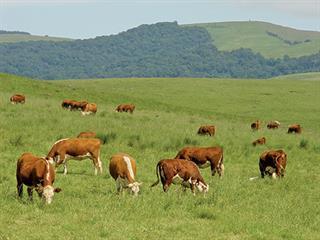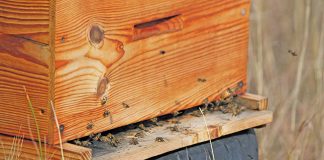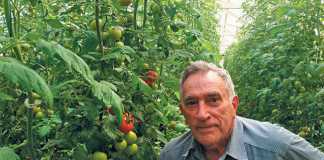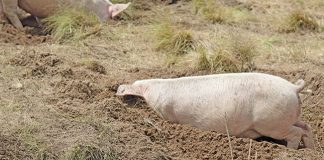
Subsistence farmers should have a mix of crop and livestock to make them more resilient to the impact of climate change. This is a departure from the usual advice they are given – to diversify just their crop types to respond to changes in climate. This is one of the findings of a study by the Environmental Policy Research Unit at the University of Cape Town, following a countrywide survey of smallholder farmers who supplement their household income through selling agricultural produce, and also use it to boost their food supply at home.
Overall, findings suggest that mixed farming strengthens the resilience of farmers under climate change, as they are more diverse and can easily shift between livestock and crops. This makes them more likely to be less sensitive to warming and drying conditions. This is especially evident amongst dryland farms.
In South Africa, 40% of poor households live in rural areas and depend on agriculture as a source of income and food. These subsistence farmers are particularly vulnerable to climate change because they depend mostly on dryland agriculture and have limited ways of adapting to changing farming conditions.
The survey
The study included income information from 1 121 subsistence farmers in all nine provinces, taken from the 2008 National Income Dynamics Study (NIDS). Although the sample is not regarded as entirely representative of the country’s subsistence farmers because of the urban bias of NIDS, it nonetheless provides interesting insights. The study focused on farmers whose main output was used directly in the home, and where they had few, if any, inputs to buy. Only a minor portion of the farms’ produce was sold.
Amongst this spread of farmers, the researchers looked at how the crop-only, livestock-only, and crop plus livestock systems would be affected by rising temperatures and changes in rainfall associated with climate change between now and 2080. The study was particularly concerned with the impact this would have on household income and diet.
The study found that the farmers keep an average of 58% of their crop production for home consumption, and used 26,7% of the livestock products at home. It was also found that the more income a farmer earned from selling produce, the more food there was in the home.
The study suggests that farmers use the cash they earn from selling products to buy the kinds of foods they cannot grow. This means that losing crop yield or livestock will affect them in two ways: they will have less home-grown food to put on the table and less cash to buy food they cannot grow. By comparing farming strategies, soil types, and whether or not there was adequate food in the home, the researchers were able to look at how farming-related income might be affected by climate shifts, assuming that the average temperature would increase by 4,2°C by 2080, and average precipitation would drop by 9,5% by 2080.
Interestingly, when just the impact of temperature increases in the modelling was considered, farmers showed an increase in productivity in winter as conditions warmed, but the summer heat slowed down production. When only rainfall was considered, there was a year-round decrease in production. All these trends had a direct impact on household income.
However, when the researchers looked at decreases in precipitation in conjunction with rising temperature, there was an overall negative effect on subsistence farming, hitting specialised crop farmers most severely. These losses were not severe in the short term, but were likely to increase significantly by 2080.
Livestock and crop farmers
Livestock farmers in the study tended mostly cattle, goats, sheep and chickens. Crop farmers grew a wide range of grains, vegetables, legumes, some fruits and pasture crops. The modelling used showed that those farmers who had a variety of crops and livestock were the ones most able to absorb the shocks associated with a shifting climate.
For policy makers, it is worth noting that this study shows that crop farmers are likely to earn more income when the land is owned by the household, as opposed to land that is part of a land reform project. This means that government efforts to address land inequality are likely to be particularly vulnerable to the effects of climate change. Livestock farmers, on the other hand, seem to have a higher turnover if grazing animals on communal land.
Agricultural policy at the moment tends to encourage a greater diversity of crop types grown by small-scale farmers as a way of trying to increase their resilience in the face of climate change. But this study shows that in addition to crop diversity, we need to think about encouraging a greater mix of crop and livestock farming for these small-scale operators.
Email Dr Byela Tibesigwa at [email protected].













